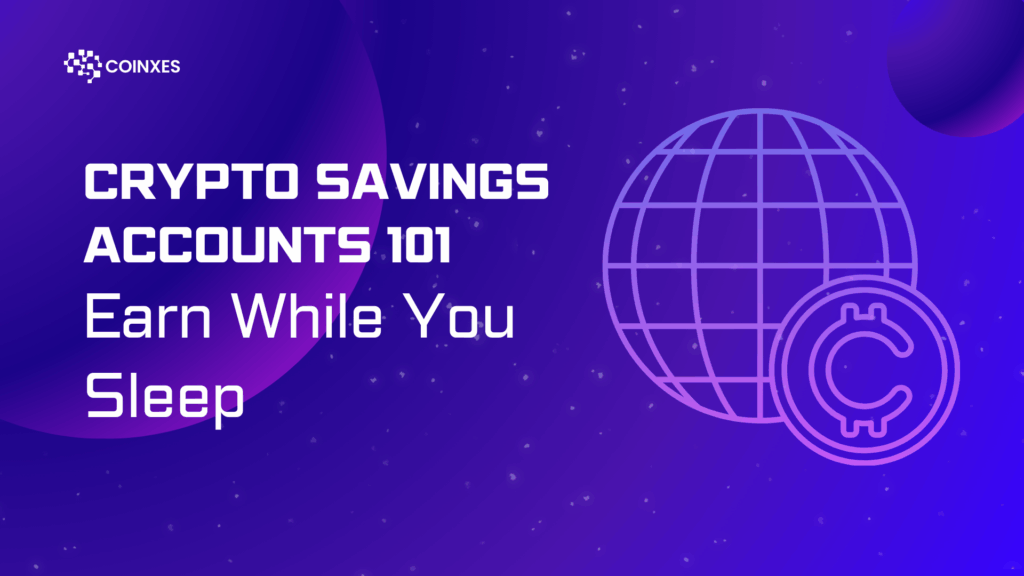Crypto Savings Accounts 101: Earn While You Sleep
In a world where traditional savings accounts offer meager returns, crypto savings accounts have emerged as a game-changer. These digital platforms allow users to earn high-interest rates on cryptocurrencies like Bitcoin (BTC), Ethereum (ETH), and stablecoins such as USDC. Whether you’re a seasoned investor or a crypto novice, crypto savings accounts offer a way to grow your holdings passively. This guide explains how they work, their benefits, risks, and how to choose the best option for your goals.
What Are Crypto Savings Accounts?
Crypto savings accounts are blockchain-based platforms that let users deposit cryptocurrencies and earn interest over time. Unlike traditional banks, these accounts operate on decentralized finance (DeFi) protocols or centralized platforms, offering Annual Percentage Yields (APYs) that often exceed 5–15%, depending on the asset and platform.
These accounts blend the security of blockchain technology with the convenience of passive income. Users can lock their crypto into a savings wallet or liquidity pool, and the platform uses these funds for lending or staking, rewarding depositors with interest.
How Do Crypto Savings Accounts Work?
1. Staking and Yield Farming
- Staking: Holding and securing a blockchain network by “locking” your crypto. You earn rewards proportional to your stake (e.g., Ethereum’s proof-of-stake model).
- Yield Farming: Lending your crypto to DeFi protocols like Aave or Compound, which use the funds for loans. You earn interest and/or protocol tokens as rewards.
2. APY Explained
The Annual Percentage Yield (APY) reflects your projected returns, including compounding. For example, a $10,000 deposit at 10% APY grows to ~$11,000 in a year.
3. Centralized vs. Decentralized Options
- Centralized Platforms (CeFi): Services like BlockFi and Celsius offer user-friendly interfaces but rely on third-party custody.
- Decentralized Platforms (DeFi): Protocols like Yearn Finance or Aave let you retain control of your funds via smart contracts but require technical know-how.
Benefits of Crypto Savings Accounts
- High Returns
Traditional savings accounts average 0.1–1% APY, while crypto platforms often offer 5–20%+ for top-performing assets. - Accessibility
Most platforms operate 24/7, allowing deposits and withdrawals anytime—no bank holidays or delays. - Liquidity Options
Some accounts let you access funds instantly, while others require a lock-up period for higher returns. - Diversification
Earn on multiple assets, from stablecoins to volatile altcoins, aligning with your risk tolerance.
Risks and Considerations
- Market Volatility
Crypto prices can swing wildly. Even with high APYs, your principal could lose value if the market crashes. - Platform Security Risks
Hacks or scams (e.g., the FTX collapse) highlight the importance of vetting platforms. Look for audited smart contracts and cold storage for funds. - Regulatory Uncertainty
The SEC and global regulators are tightening rules. Some platforms may face shutdowns or forced compliance, impacting your access to funds. - Lock-Up Periods
High-yield accounts often require you to lock funds for weeks or months, limiting liquidity.
Popular Crypto Savings Platforms
- BlockFi
- APYs: Up to 8.6% for BTC, 7.5% for ETH (as of 2024).
- Features: Simple interface, insurance options, and loans against deposits.
- Celsius Network
- APYs: 6–12% for stablecoins like USDC.
- Risk: Controversial history; prioritize small deposits.
- Aave (DeFi)
- APYs: 5–20% depending on the asset and market demand.
- Features: No custodial risk; users retain custody via wallets like MetaMask.
- Compound
- APYs: Variable rates based on supply/demand for assets.
- Tech-Savvy: Requires interacting with smart contracts but offers transparency.
How to Choose the Best Crypto Savings Account
- Compare APYs
Use platforms like DefiLlama or CoinMarketCap to compare rates and protocols. - Assess Security
- Look for audits by firms like CertiK or SlowMist.
- Avoid platforms without cold storage or insured funds.
- Check Liquidity
Decide if you need instant access or can tolerate lock-ups. - User Experience
Centralized platforms like BlockFi are ideal for beginners, while DeFi options suit tech-savvy users.
Tips for Maximizing Returns
- Diversify Your Holdings
Spread deposits across stablecoins (lower risk) and volatile assets (higher returns) to balance risk. - Reinvest Interest
Many platforms allow automatic compounding, boosting long-term growth. - Monitor Market Trends
High APYs often signal high risk. Research why an asset offers exceptional yields (e.g., low liquidity). - Start Small
Test platforms with a small deposit before committing larger sums.
The Future of Crypto Savings
As DeFi matures, expect:
- Regulatory Clarity: More platforms will comply with SEC guidelines or shift to decentralized models.
- Institutional Adoption: Banks like PayPal and Revolut may integrate crypto savings features.
- Improved Security: Enhanced protocols like zk-SNARKs could reduce hacking risks.
Conclusion
Crypto savings accounts offer a compelling way to grow your digital assets passively. While risks like market volatility and platform instability exist, careful research and diversification can mitigate them. Whether you choose a user-friendly CeFi platform or a hands-on DeFi protocol, the key is to start small, stay informed, and prioritize security. With the right strategy, crypto savings can be a cornerstone of your financial growth.
FAQs
Q1: Are crypto savings accounts safe?
- A: Safer platforms use audits and cold storage, but always diversify and research before depositing.
Q2: What’s the difference between APY and APR?
- APY includes compounding interest, while APR does not.
Q3: Can I earn on stablecoins?
- A: Yes—stablecoins like USDC often offer steady returns (5–8% APY) due to their low volatility.
Q4: How do I choose between CeFi and DeFi?
- CeFi: Easier for beginners but custodial risk.
- DeFi: No custodial risk but requires technical skill and due diligence.
Q5: Are there taxes on crypto savings earnings?
- A: In most countries, interest and rewards are taxed as income or capital gains—consult a tax advisor.
